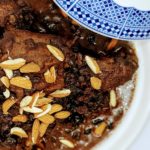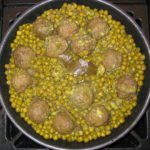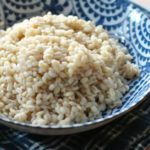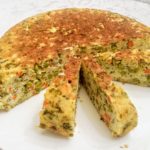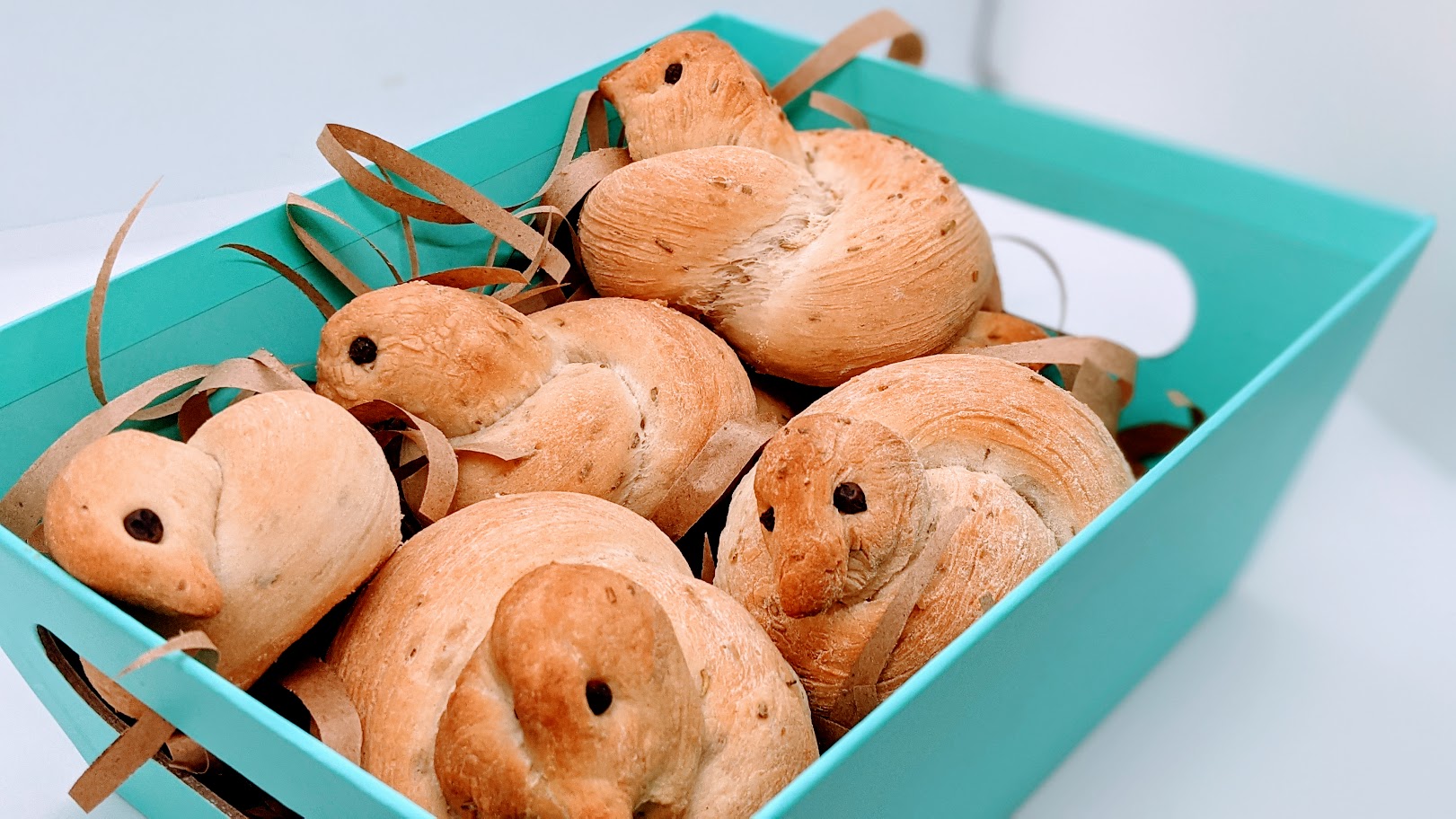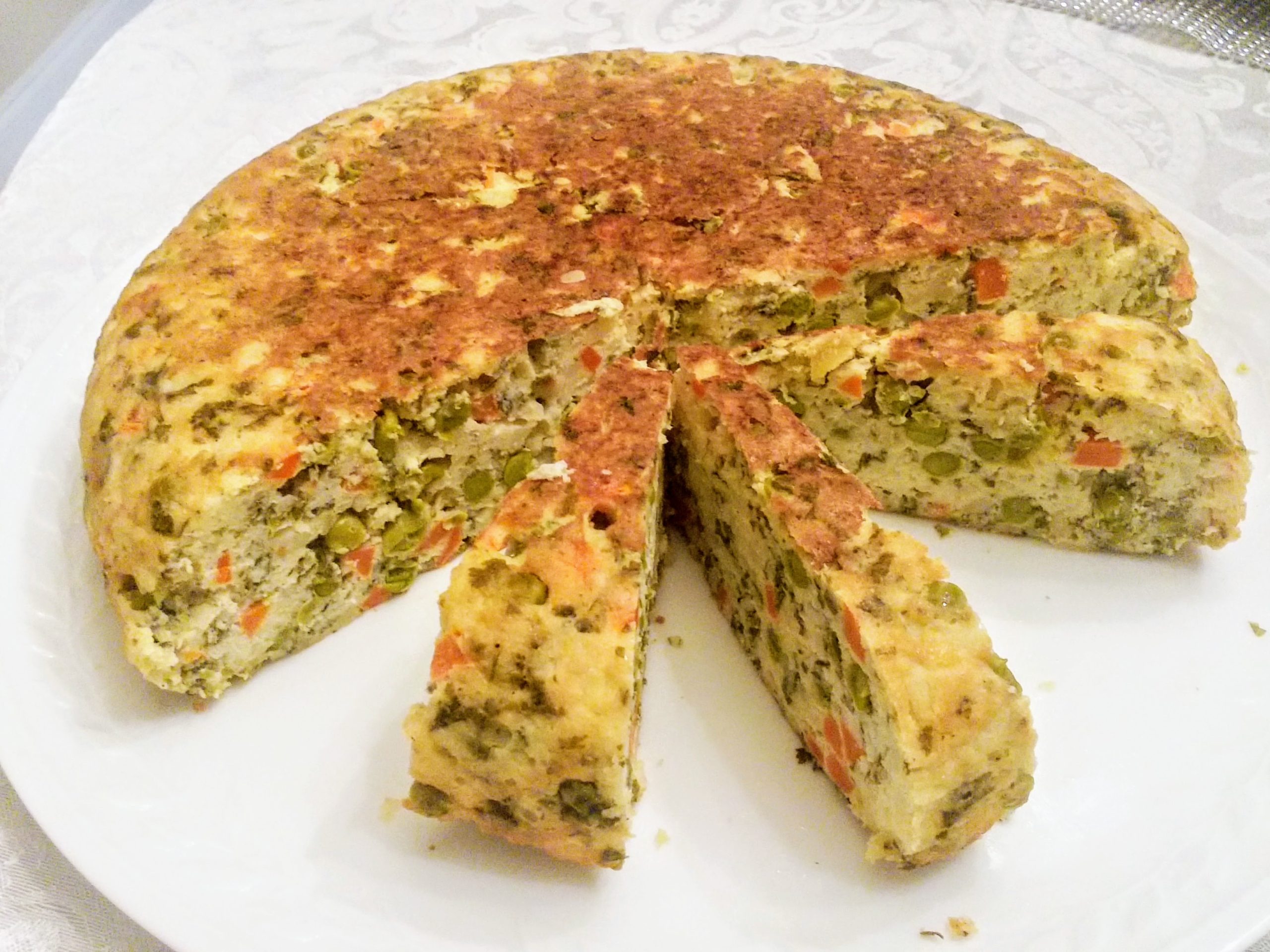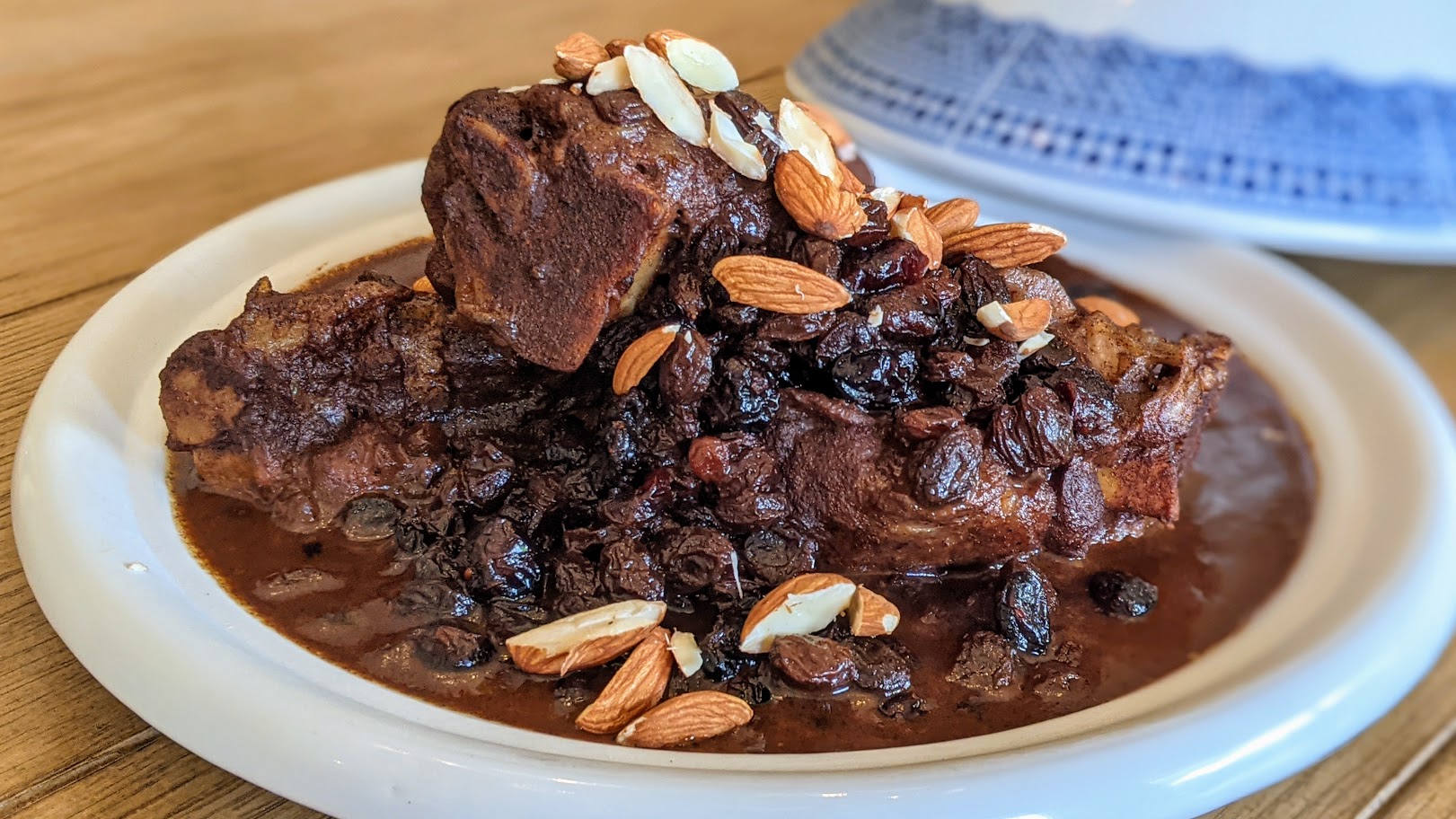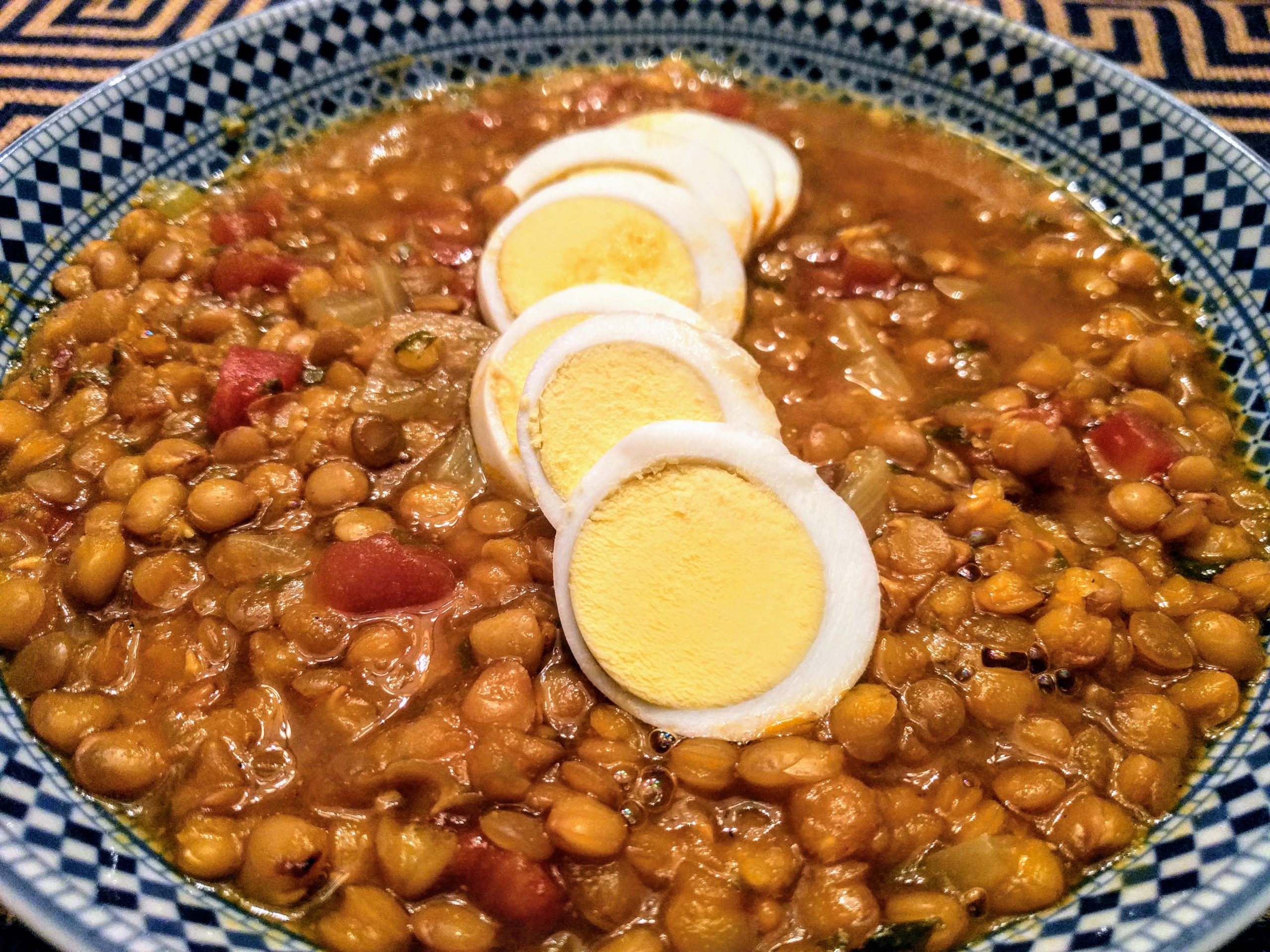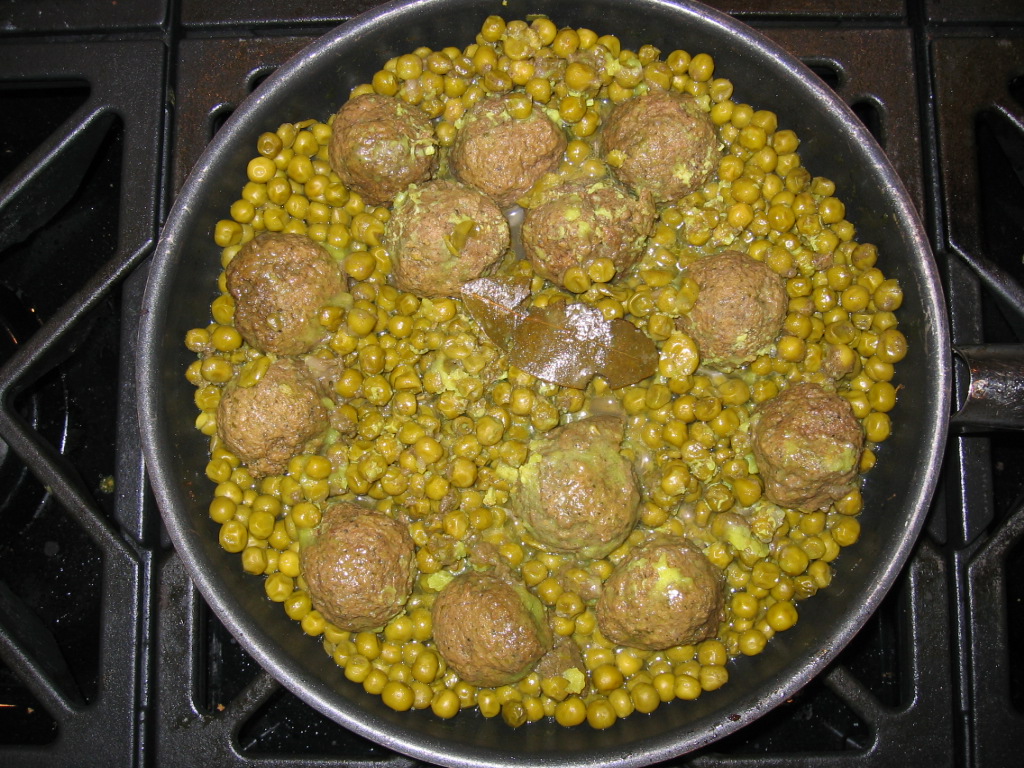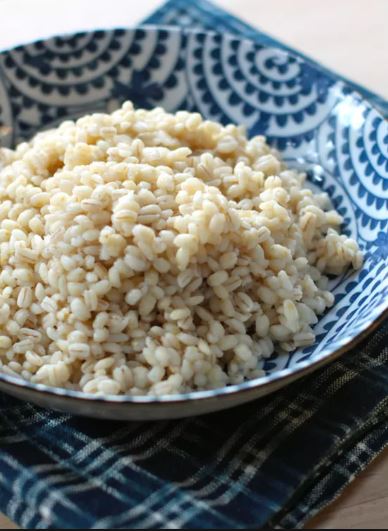Shavuot Recipes
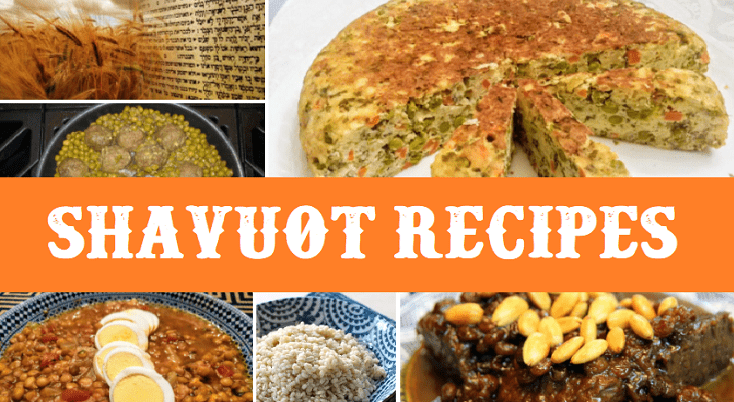
Unlike Ashkenazi Jews whom eat dairy dishes on Shavuot, Sephardic Shavuot recipes include meat at every meal during the holiday. Every meal incorporates beef or lamb and the seven items listed below.
On the eve of Shavuot, a platter with the seven species of food specific to Israel is displayed prominently on the table. Two loaves of fine wheat flour, shaped like a bird, a mountain or a ladder, are given a place of honor as well.
It is the lovely custom of the Amar family to bring home a sheaf of wheat which is displayed on the table.
The book of Devarim (Deuteronomy) 8:8 lists the seven species native to the Land of Israel:
1. WHEAT is our most basic food. It can sustain life and is the symbol of hospitality and festivity.
2. BARLEY is a plant that can grow even in bad soil and poor weather conditions. It reminds us to be strong even in difficult times.
3. GRAPES symbolize joy and fruitfulness. As they grow in clusters, they remind us of the joy of celebrating together as a family and as a community.
4. FIGS are one of the few fruits that can be harvested year-round. They remind us of the Torah, which we read all year long.
5. POMEGRANATES are full of seeds, just as we would like to be full of good deeds.
6. OLIVES are a rich and versatile food and the olive tree is strong. In Israel there are olive trees 1,000 years old that still bear fruit.
7. DATES are sweet as honey. Their fruit is soft, but the pit is hard. Dates remind us to be sweet, but strong.
History of Shavuot
Shavuot is known as the Feast of Weeks in English and as Pentecost (Πεντηκοστή) in Ancient Greek. It is a Jewish holiday that occurs on the sixth day of the Hebrew month of Sivan (may fall between 14 May–15 June).
Shavuot has a double significance. It marks the all-important wheat harvest in the Land of Israel (Exodus 34:22); and it commemorates the anniversary of the day God gave the Torah to the entire nation of Israel assembled at Mount Sinai, although the association between the giving of the Torah (Matan Torah) and Shavuot is not explicit in the Biblical text.
The holiday is one of the Shalosh Regalim, the three Biblical pilgrimage festivals. It marks the conclusion of the Counting of the Omer, and its date is directly linked to that of Passover. The Torah mandates the seven-week Counting of the Omer, beginning on the second day of Passover, to be immediately followed by Shavuot.
This counting of days and weeks is understood to express anticipation and desire for the giving of the Torah. On Passover, the people of Israel were freed from their enslavement to Pharaoh; on Shavuot they were given the Torah and became a nation committed to serving God.
The word Shavuot means weeks, and the festival of Shavuot marks the completion of the seven-week counting period between Passover and Shavuot. The hazkara (death anniversary) of King David is traditionally observed on Shavuot.
A Collection of Sephardic Shavuot Traditions, Recipes and Prayers
by Deanna Amar Pool
*Download our family traditions, prayers and recipes booklet here.
In the rhythms of Jewish living, Shavuot holds a special place.
In addition to being a spring festival and a great outdoor celebration it has the added honor of being the season when God gave the Ten Commandments to His people who in expectation of that moment study Torah all night.
It was at one of these all-night study vigils, on the eve of Shavuot that the famous 16th century scholar and mystic, Yosef Karo, received a personal divine revelation through a “maggid” who became a regular companion of his, inspiring him to write Maggid Mesharim.
The Eve of Shavuot
On erev Shavuot (the eve of Shavuot) it is customary to go to the mikvek.
Mincha service doesn’t start until after the stars appear in the sky so as to complete the seven weeks of the Omer.
At Lel Tikun, to show their gratitude for the giving of the Torah, some congregations purposely add to the reading of the prescribed texts Parasha Naso which at 176 verses is the longest of the Torah. Hence the little derisive rhyme “Me canso Naso; Naso tired me out.”
In many Sephardic congregations, on the first day of Shavuot, as we open the Holy Ark, before taking out the Torah scrolls, it is customary to read the Ketubah l’ Shavuot or Ketubah de la Ley.
Poem
The poem composed by the Safed mystic Rabbi Israel Nagara (1550-1625) is based on Hosea verses 2:21-22: “I will betroth you unto Me in righteousness, and in justice, and loving kindness, and in compassion. And I will betroth you unto Me in faithfulness; and you shall know the Lord” and Jeremiah 31:31 ” I will make a new covenant with the house of Israel.”
This “piyyut”, actually a love song modeled after Shir Hashirim, takes on the form of a marriage contract between the Torah, the bride and Israel, the groom. God as the bride’s father gives her as dowry the 613 commandments, the Bible, Talmud and other sacred writings.
Moses presents as dowry to his son, the people of Israel, the tallit and tefilin, the Shabbat and festivals. The bride enters the chuppah, responding affectionately: “We shall do and we shall hear.” Witnessed by God and His servant Moses, the contract is dated the 6th day of Sivan, in the year 2448 from the Creation.
The reading of the Ketubah concludes with the prayer: “May the groom rejoice with the bride whom he took unto himself for his portion. May the heart of the bride rejoice in the husband of her youth and may she praise him “Happy is the people whose portion is thus.”
Some Differences
Where Ashkenazim recite the Akdamut, Sephardim chant the Azharot, a rhymed listing of the 613 commandments, composed by the medieval scholar and poet, Shlomo Ibn Gabirol. Outside of Israel, the positive commandments of the Azharot are read with the first half of the Book of Ruth, on the first day of Shabuot. The negative commandments and the second half of the Book of Ruth are read on the second day.
Psalms hold a place of honor at synagogue services and at home: not only do we commemorate their author King David who was born and died on Shabuot, but by so doing we tie him to his ancestress Ruth the Moabite. The Sages teach us that “Ruth” means “sated” and that David “sated” God, as it were, with his psalms of praise and love.
The 10 Commandments
At the reading of the Ten Commandments, the congregants stand up in reverence, men pull their tallit over their heads and gathering their children close to them, they huddle in silent piety.
Shavuot is also a water-festival. At the end of services as men and children walk back home, it is customary to splash them with water to recall that Torah flowed like water upon the parched souls of the Israelites at Sinai, purifying them. It also reminds us that Moses was drawn out of the waters by the daughter of Pharaoh on the 6th of Sivan.
The Sephardic celebration of Shavuot at home differs from that of the Ashkenazim.
Following the precepts of the Gemara that one must partake of wine and meat at a seudah, we do not eat dairy products at any of the required meals of the holiday.
Instead, in honor of the seven species of produce native to Israel, we serve barley, wheat, olives, grapes, dates, figs and pomegranates which according to the rabbis contain 613 seeds.
Rabi Yosi teaches us that Mount Sinai was torn out of Mt. Moriah as a “challah”. At Mount Moriah, Isaac was bound, at Mount Sinai Israel received the Torah. We honor the mountain that figures prominently at Shabuot by baking a special bread, “el monte” that is shaped like a mountain.
Other families shape their bread as a dove, in gratitude to the birds that did not chirp during the giving of the Torah, enabling all Israelites to hear the divine words. Others still, make rectangular loaves of bread with four corners.
(“Tonight we have discussed the different ways Jews celebrate Shabuot. Let them not be a barrier but rather just a different path each of us takes in order to get closer to God. The message of Shabuot is a universal message of redemption through love, love of God for a down-trodden people of slaves, love of Ruth for her elderly mother-in-law Naomi, love of Boaz for his kin’s misfortune.
Today, we are the chosen people of universal hatred, we, whose Torah first commandment is one of love. We shall triumph, once more, because we know how to love, how to heal, how to build. The blueprint of our survival is in the Torah we have come to receive tonight.”)
Did you know …
On the 6th of Sivan, fifty days after leaving Egypt, the people of Israel received the Torah at Mount Sinai.
One may wonder why this momentous event did not take place in the month of Nissan, nor in the month of Iyar. Our Sages inform us that the zodiac sign or mazal of Nissan is a lamb and Iyar’s an ox, whereas Sivan is represented by human twins. Could the Torah be given to any other than Man who has hands to clap with and feet to dance with?
Why was the Torah given in the third month of the newly established calendar, instead of the first month that made Israel a nation of free men?
A Sage from Galilee expounded before Rav Chisda upon the prominence of the number 3:
Torah is divided into 3 portions: Torah, Nebiim, Ketubim
It has been given to 3 groups of men: Cohanim, Leviim, Israel
Torah was given on the 3rd day (after abstinence)
Moshe Rabbenu was the 3rd child of Amram and Yochebed
Shavuot is also known as the Festival of:
Reaping: Two loaves of wheat were brought to the Temple
Weeks: Shabu’ot – celebrated seven weeks after the Exodus from Egypt
Oaths: Shevu’ot – Na’aseh VeNishma’ (we will do and we will hear) promised Israel
First Fruit: Bikurim – the first fruit of the seven species native to the Holy Land, wheat, barley, olives, grapes, dates, figs and pomegranates were brought to the Temple in baskets as modest or luxurious as one’s means permitted. Festival of Assembly or Conclusion: Atzeret – Rabbis say that Shabu’ot is the concluding 8th day of Pessah as Shmini Atzeret concludes Succot.
What is the reason for staying up on the first night of Shabu’ot and be involved in Torah study. According to the Sages, this custom is based upon:
The Zohar (Perashat Emor 98a)
The Midrash Shir Hashirim Rabba 1:12
The Magen Abraham, which based on a Midrashic account states: “At the revelation at Sinai, when the time came for the Torah to be given, many fell asleep and the Almighty had to awaken them. We must rectify this through our staying awake and studying Torah through the night.” (Or Hahayim 494)
Rambam who said, “A person learns most of his wisdom by night.”
Yosef Caro and some of his colleagues met to study Torah on Erev Shabu’ot. Rabbi Shlomo Alkabetz, the author of Lecha Dodi, described what happened.
While Yosef Caro was studying his mouth opened and words emerged in a voice that was not his. Those present listened as the voice told them that God approved of their piety and urged them to leave Turkey at once and go to Israel. Shortly after their departure an earthquake ravaged Turkey.
From that day onward, the Maggid or angelic voice became a regular friend of Karo, visiting him often, after midnight or in the early hours of morning, especially Shabbat morning.
Why is Ruth the Moabite celebrated on Shabu’ot, the festival of the Giving of the Torah to the people of Israel?
The numerical value of the name “Ruth” 606 + 7 Noahide laws since she was a convert, total 613, the number of mitzvoth the Torah enjoins us to observe.
Our Sages also tell us that the Book of Ruth, authored by the Prophet Samuel, is read on that day so we might know that the Written Torah and the Oral Torah are one, for the Oral Torah justifies the legitimacy of King David, her descendant.
As Shabu’ot was the setting of Boaz and Ruth’s betrothal, so is Torah the instrument of betrothal between God and Israel, for Torah is called “morasha” or heritage, upon which the rabbis comment, not “morasha” but “me’orasa” or betrothal. When the Hebrews encamped at the foot of Mount Sinai, it was their first encampment without strife.
All our traditional Sephardic Shavuot recipes can be found here.
Shavuot Recipes
